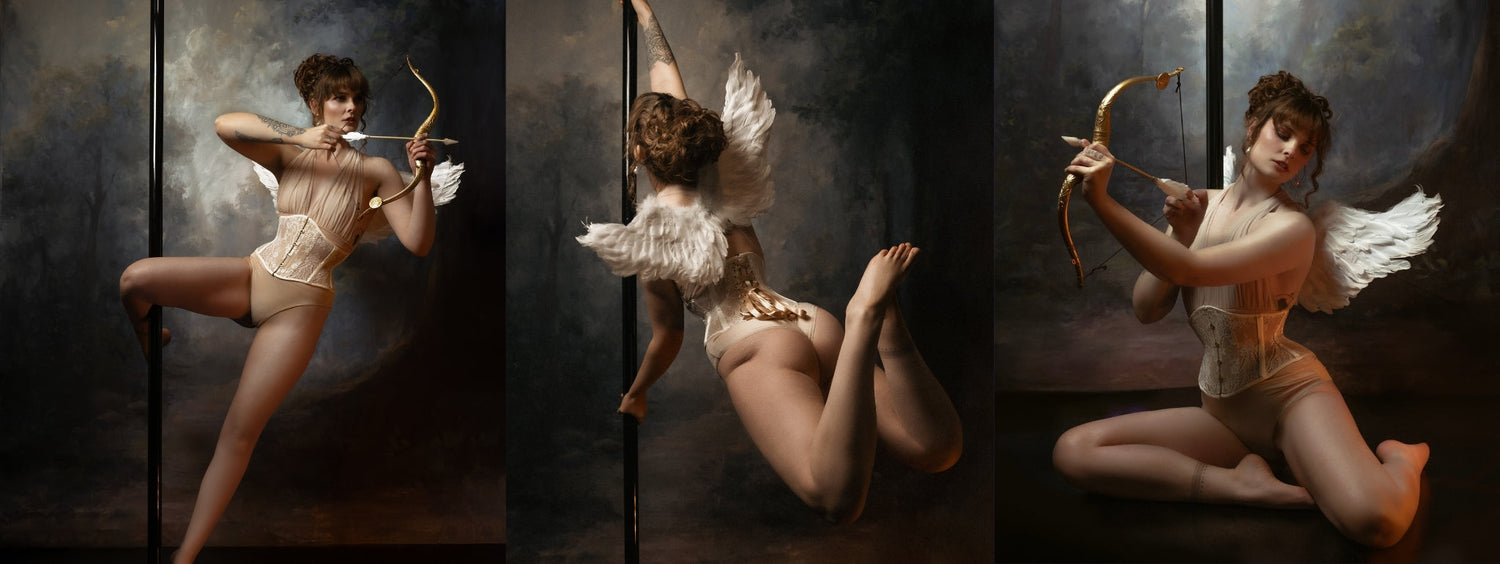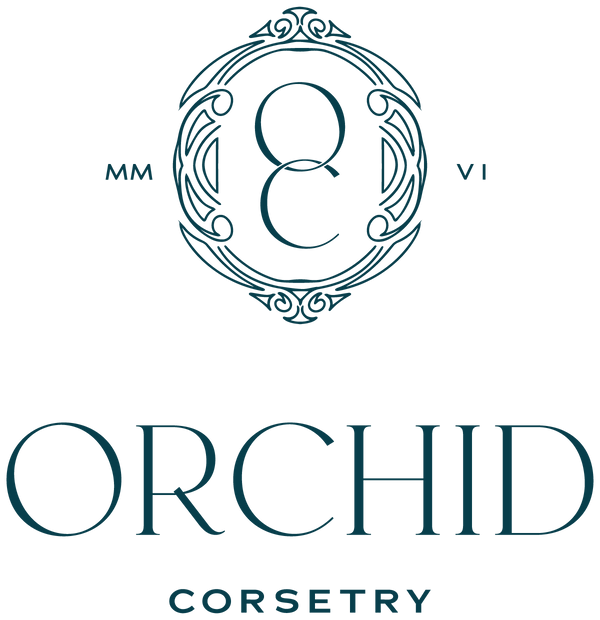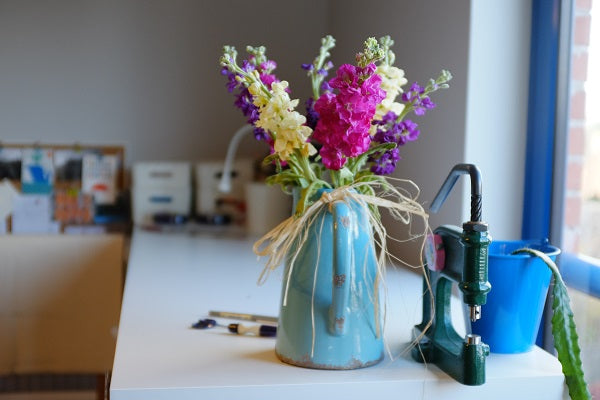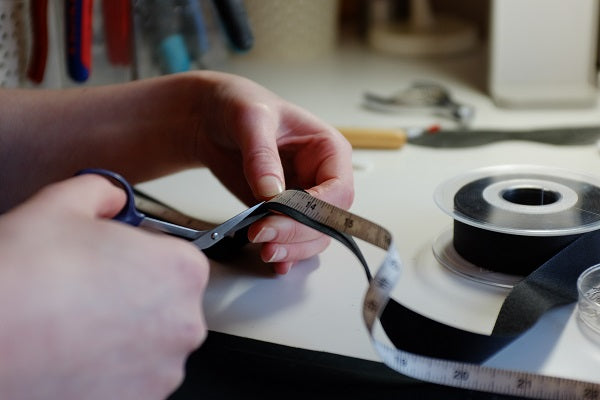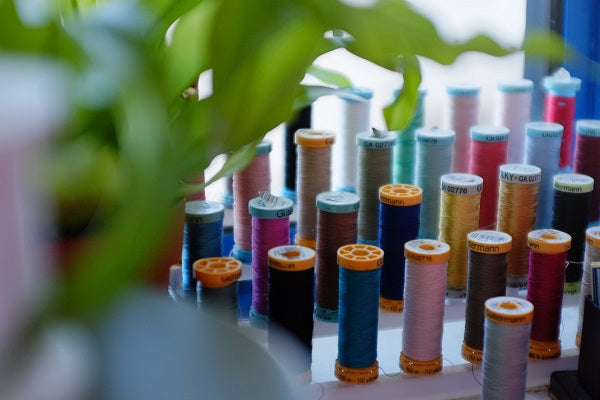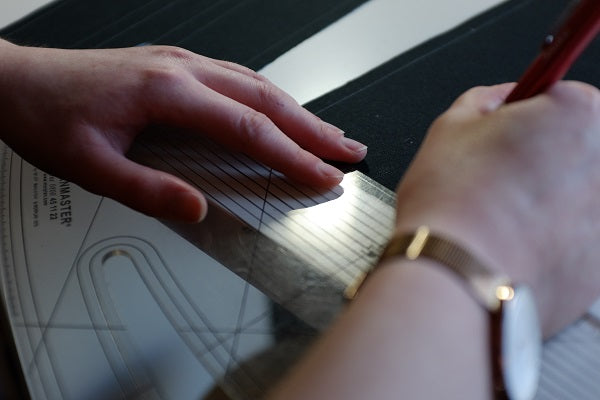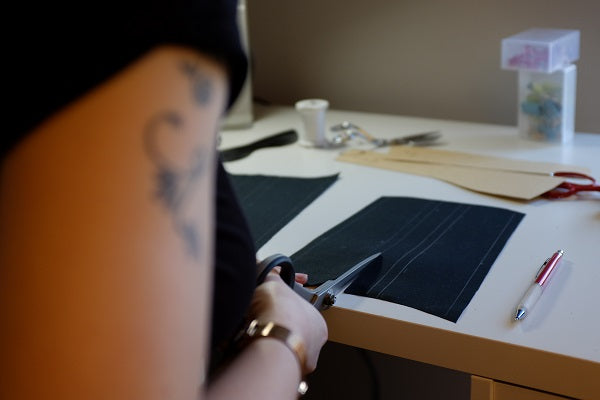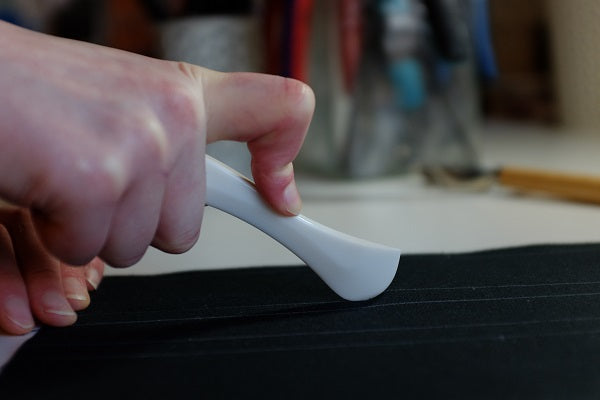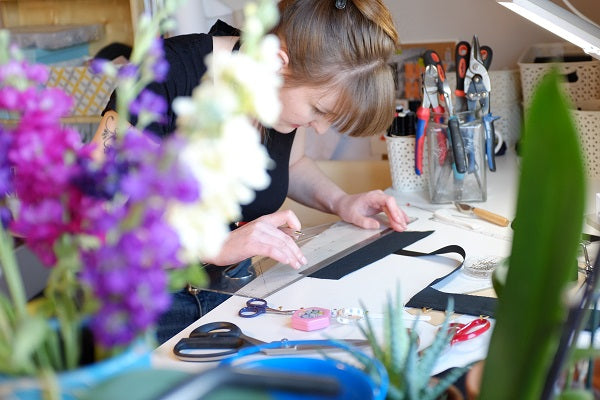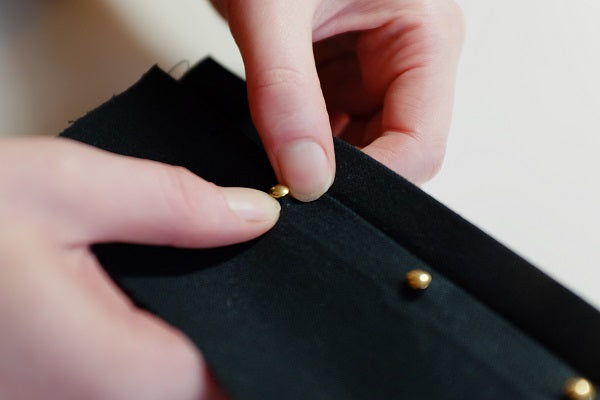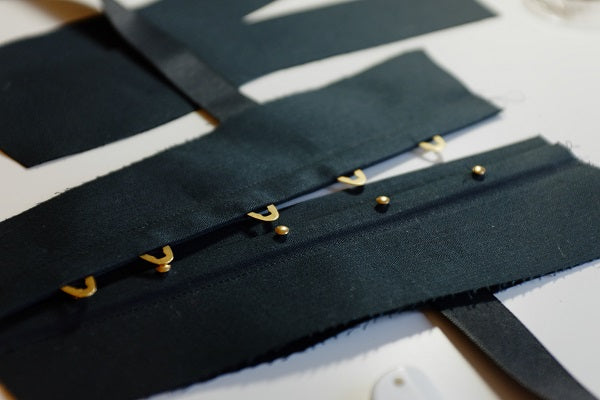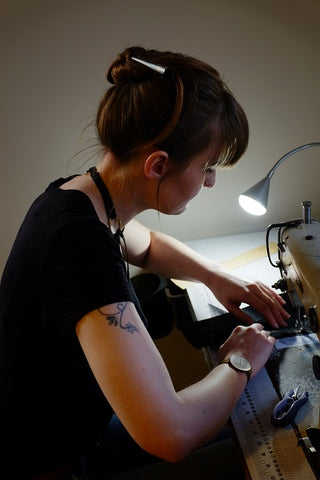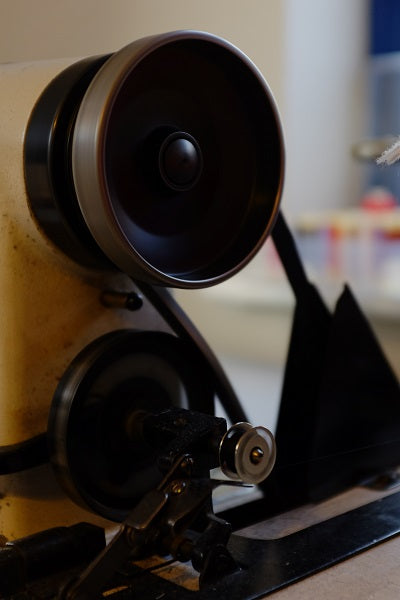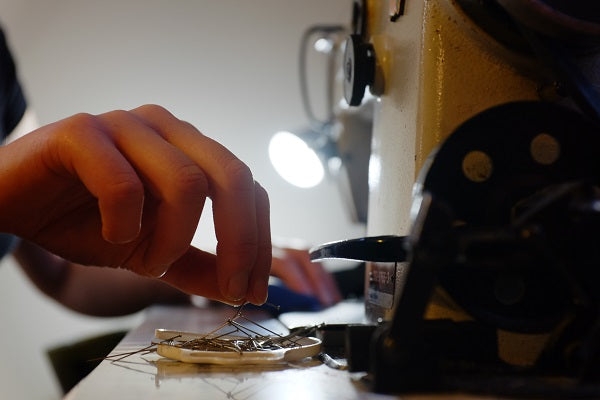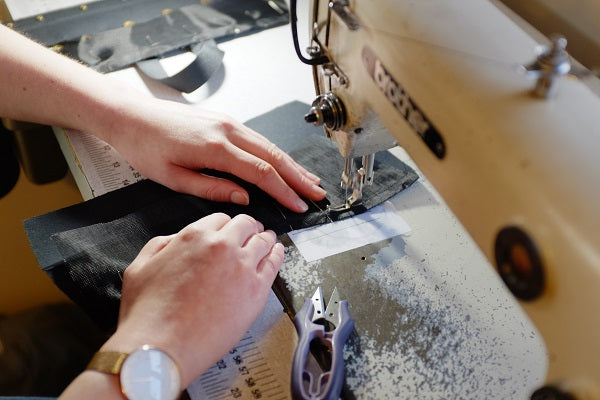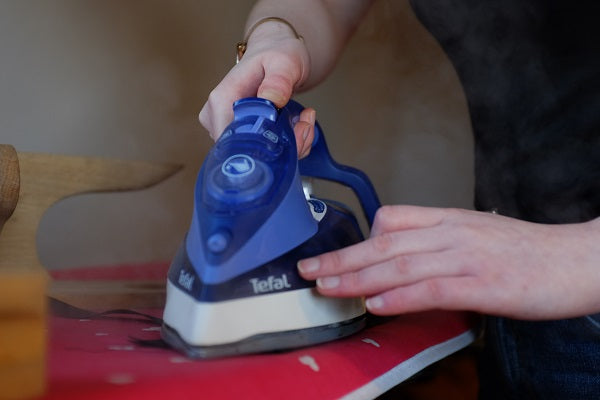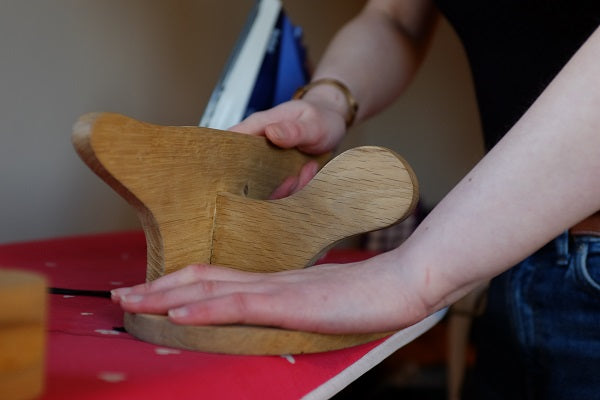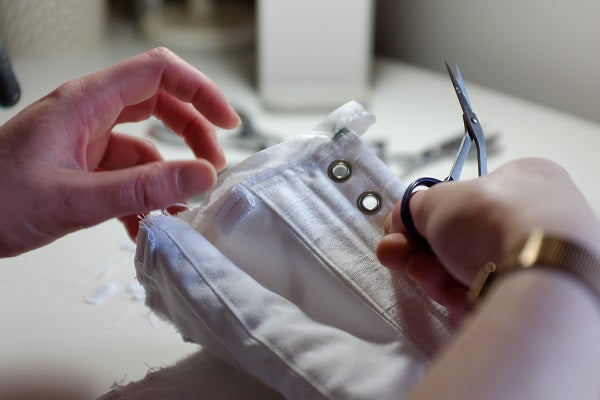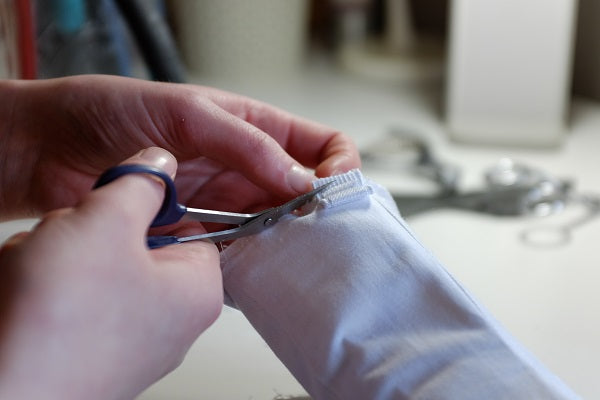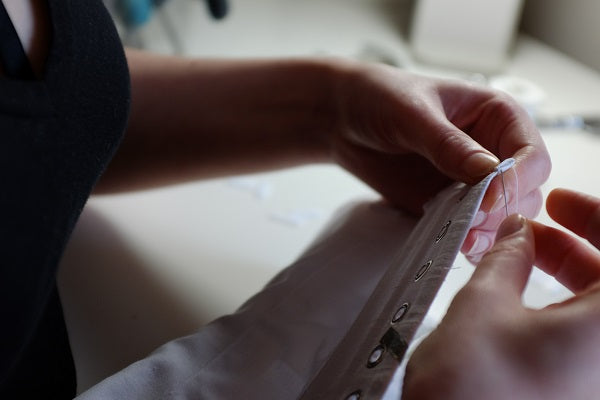When I think about it, studio life is really my happy place! It’s an arena of challenge and small victories, layering unique aesthetics, trial and error, and midnight eureka moments! It is buckets of tea, contemplative practices, refinement and continual development and learning. I feel so lucky to walk up the stairs to my busy, often messy and creatively chaotic workspace every day! So as I look ahead to the businesses thirteenth birthday I thought it would be nice to share a little glimpse into working practice in the studio, illustrated with photography from Sam Irvine. These photos were actually taken in my previous studio but very little has changed apart from the view from the window!
Cutting Out
You never quite get past the excitement and mild anxiety of marking and cutting a new piece of luxurious cloth. It’s the moment of no return, the start of your adventure. Many of my corsets are formed from two, three, or even four different layers of cloth, an elegant fashion layer of vibrant textured silk or smooth, cool satin. Robust cotton, woven as densely as can be to support the tension of the garment, and a light soft lining to protect the skin. Each must be cut and marked individually, layered and stitched to act as one unit, strength, beauty and comfort combined.
Inserting The Busk
Corsetry is full of tools, components and materials that are completely unique to the craft. The busk is one of my favourite examples. You’ll never find this remarkably simple and effective item anywhere other than in a corsetiere’s kit bag! It was developed in the industrial revolution and remains mostly unchanged, bar a few upgrades such as a glittery finish or a smooth rustproof coating to the steel. The main reason I love it so much is that choosing the correct busk type is crucial to the comfort and fit of a corset. You may need a spoon busk to smooth and support a post-partum stomach, a flexible busk with a little reinforcement for a slender figure without much waist reduction. Whatever your requirements, there’s a transformative busk for you!
Stitching
There’s something very meditative about spending a lot of time at the sewing machine- you have to remain focused on your task but the rhythm of the steady stitch, the hum of the motor, the timing of easing a pin out just before the needle hits it is quite ritualistic and draws you into a reverie of it’s own. My machine is nearly 50 years old and she doesn’t look so fancy these days, but she’s been my reliable friend since the first days of the business and we continue to take care of each other.
Pressing
Though it may look like it’s “just ironing” pressing is one of the quieter arts of studio life. It has an array of trusty tools, untreated wood “clappers” “tailors anvils” and sawdust filled “hams” help you to compress the steamed cloth into sharp lines or set into rounded curves, letting it slowly cool under the weight before it can be moved. This step can’t be hurried, and when given time, it transfigures flat cloth into devastating hourglass curves.
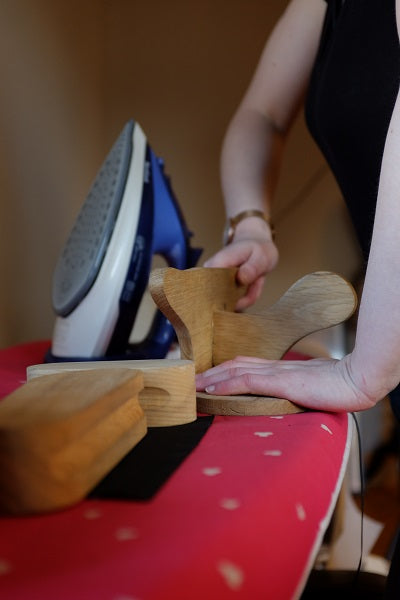
Handsewing
I always finish my bespoke projects by hand sewing the bias binding closed at the top and bottom edge of the corset. This final stage of attention and care is one of those indefinable elements that elevates a piece of work to looking precious, and different to something mass-produced. This is a labour of patience. It can only be done with time and care, so I put on an audiobook, or an album I’ve been waiting to listen to, and absorb it as stitch by stitch, the project draws to a close.
Studio life this week revolves around working on two new photoshoot samples for a Sally Sparrow workshop in between your commissions! The time pressure is on but it’s exciting to be trying out a few ideas that I’ve been working on behind the scenes! I hope your week is filled with creativity and happiness.
